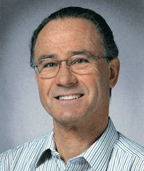Quantization
of
analogue
signals
Professor
Lipshitz’s
focus
has
evolved
along
with
technology.
Almost
everything
is
digital
now
—
music,
photos,
TV.
A
digital
representation
of
an
audio
waveform,
for
example,
is
simply
the
sequence
of
numbers
assigned
to
the
samples
of
the
original
analogue
signal
voltage
at
regularly
spaced
sampling
instants
(the
sampling
theorem
guarantees
the
validity
of
this
procedure).
Assigning
infinite-precision
numbers
is
not
possible,
so
an
approximate,
finite
precision
number
(of
b
bits,
say)
is
used
to
represent
each
original
sample
value.
This
introduces
rounding
or
quantization
errors,
which
are
responsible
for
correlated
distortions
in
both
digital
audio
and
digital
photography.
The
greater
the
number
of
b
bits
used
to
represent
the
samples
digitally,
the
smaller
the
error,
but
the
greater
the
amount
of
data.
Lipshitz’s
work
has
shown
how
the
proper
use
of
“dither”
during
the
quantization
operation
can
actually
convert
the
quantization
errors
into
a
noise
that
is
uncorrelated
with
the
audio
signal
or
picture.
The
consequences
of
the
quantization
error
can
thus
be
made
innocuous.
“In
principle,
you
don’t
want
any
audible
or
visible
corruption,”
says
Stan.
“We’ve
shown
how
to
handle
the
data
properly
so
that,
whatever
subsequent
processing
you
do,
corruption
is
minimized.
Since
quantization
error
is
unavoidable,
the
best
you
can
do
is
to
mathematically
change
the
nature
of
the
error
so
as
to
make
it
into
an
acceptable
kind
of
signal-independent
noise.”
Triangular-Probability
Density
Function
(PDF)
white
dither
noise
does
this.
Professor
Lipshitz’s
work
is
currently
focused
on
the
use
of
dithered
noise
shaping
in
the
quantization
of
analogue
signals
—
both
sound
and
picture
—
in
order
to
maximize
the
perceptual
quality.
University
of
Waterloo
Mathematics,
Annual
Report
2004
